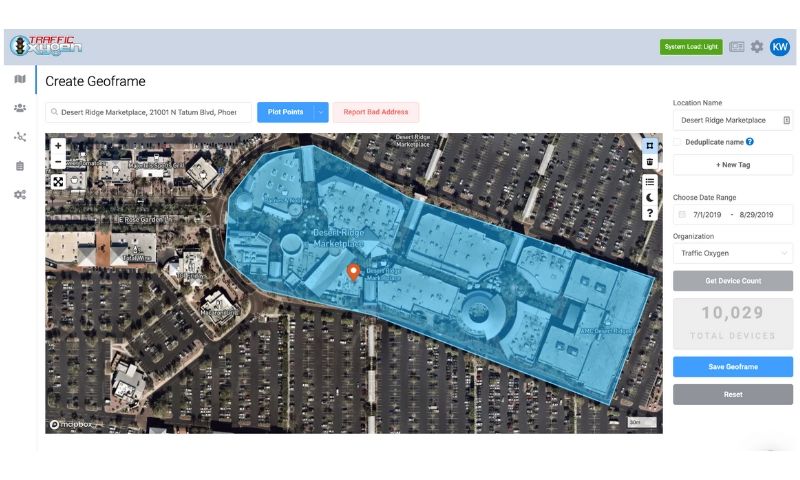Marketing and advertising with geotechnology is as diverse as the local or national brands doing the advertising. Major enterprises and local businesses have stepped up their location-based audience targeting for advertising. Understand the trends and jump in with big-data.
Location data, geofencing, geoconquesting: location-based technology is opening up a world of possibilities for marketers. The differences in tech can make or break your efforts. It’s becomes complicated as new capabilities emerge every day.
Let’s break down some use cases and important “geo” concepts to provide a better understanding of the basics. You are clearly considering geofencing in your bag of tricks. Why not reach out for your free portal!
The barriers to entry for powerful location based advertising have dropped, thanks to GeoFencing agencies like Traffic Oxygen who not only run highly ads but set up and optimize them with no management fees. Let’s talk about strategy concepts and get your feet wet with geoconquesting.
 What Is Geofencing?
What Is Geofencing?
Geofencing is the practice of using global positioning (GPS) or radio frequency identification (RFID) to define a geographic boundary. Then, once this “virtual barrier” is established, the administrator can set up triggers that send a text message, email alert, or app notification when a mobile device enters (or exits) the specified area.
We call these live time proximity ads “hypermobile (HM in your Traffic Oxygen dashboard) and use satellite geofencing for our advertising.
Our technology takes it a step further: once we have picked up your target within the geofence, we can send them ads for the life of their phone. Additionally, we can pull historical data from any location in the US and create an audience to target from when and where your targets were in the geofence.
Think on that one for a minute. Where are your desired customers? A trade show last month on Friday? Your competitor down the street? Let that sink in a moment. We introduce you to your competitors customers and track when they come to your location. We’re talking geoconquesting here.
So, businesses can section off a geographic area and communicate with devices within that space — understood. But why do they want to?
How To Market With Geofencing
Geofencing is a way to engage consumers based on hyper-local location, and that can do a lot in terms of triggering immediate sales as well as understanding shopper mindset.
For example, a store could erect a simple geo-fence in an area surrounding its physical location. When users pass through, receiving a location-triggered alert or deal makes them considerably more likely to stop in and shop.
Alternatively, an auto dealer, for example, could set up a geo-fence aimed at targeting individuals who are leaving a rival dealership after browsing for a vehicle. Hitting them with an offer for$500 off a comparable vehicle with a written offer could bring new customers in droves.
Finally, even if a geo-fenced offer or notification doesn’t provoke an immediate visit or sale, it allows a business to know exactly what location a consumer passed through — and where they were when they received the message — which may aid in refining targeting efforts in the future based on what communications were most successful.
Additionally, we can see where the potential targets live; how far are they willing to travel to a competitor vs. your own company/client? We can see income levels, household size, age, sex… you’d be amazed what we can pick up. This valuable insight is used to construct and improve your geofencing advertising and marketing efforts. More insight means more conversions.
